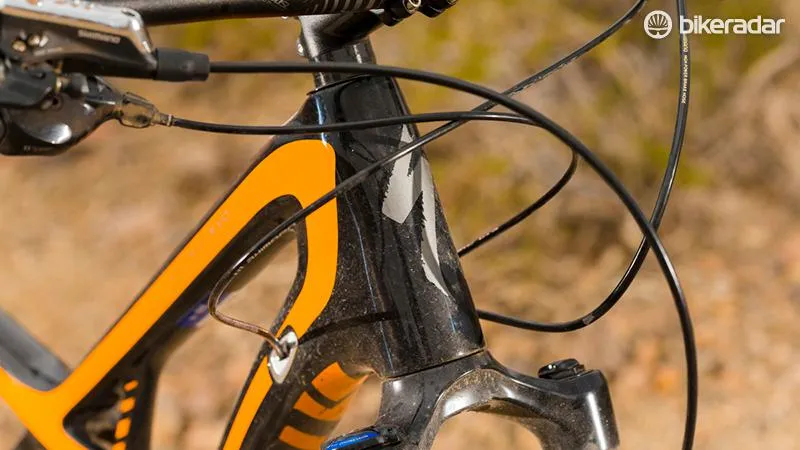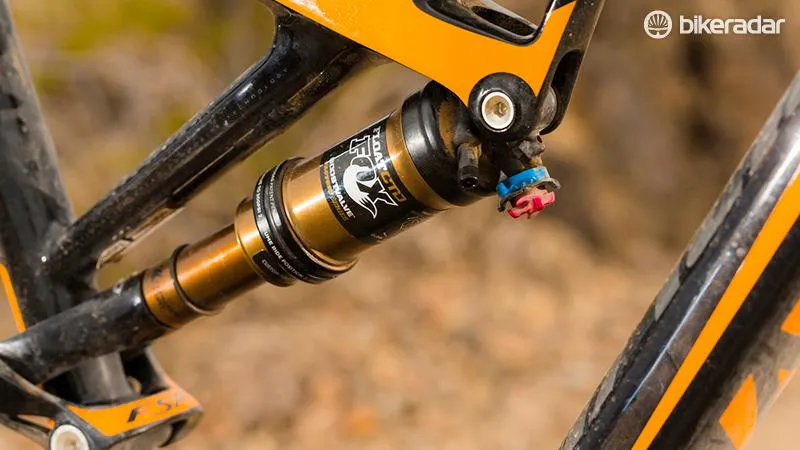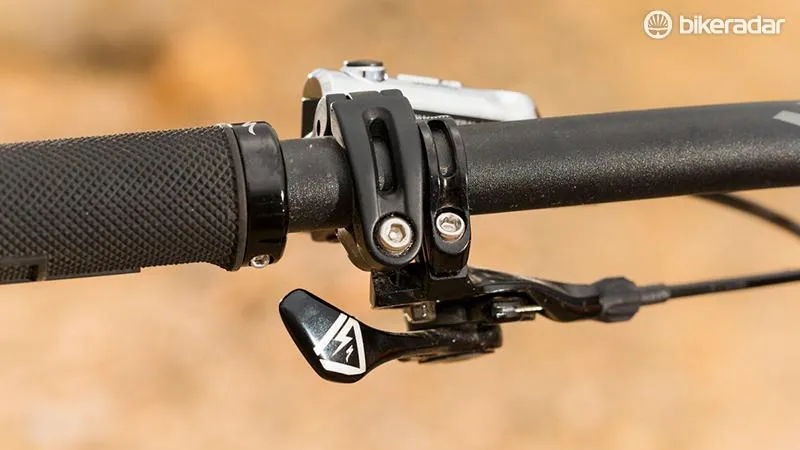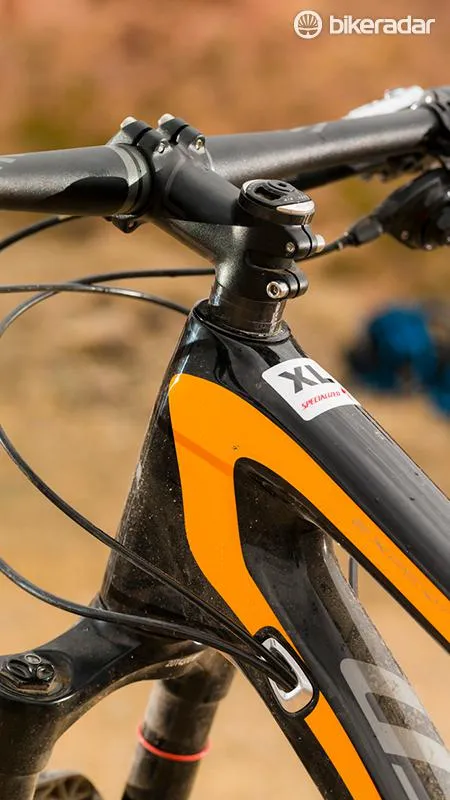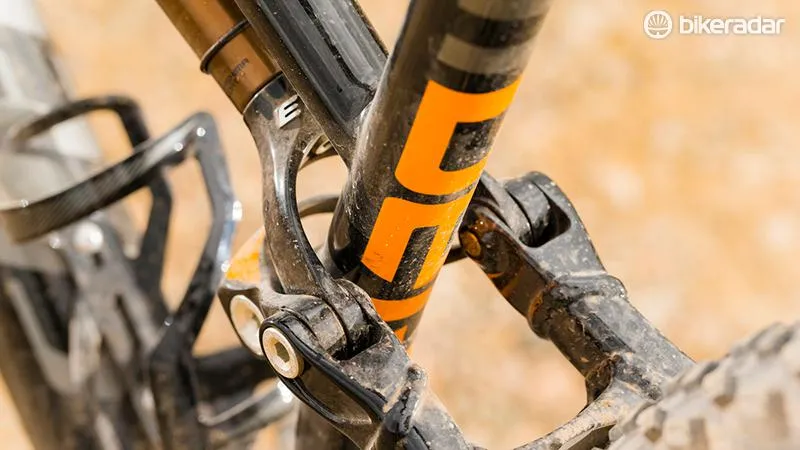Specialized’s Camber frame isn’t new, but this carbon 29er is still an evergreen in terms of all-round cross-country and trail riding appeal.
- Highs: The Carbon front end is tight and tough and the Pike fork and Auto Sag shock add excellent control to the sorted all-rounder spec
- Lows: The chaos-capable rear end and fork are gagging for a burlier cockpit and slacker head angle to make the most of them, and the price is high for little-changed chassis and decent but not deluxe spec
Frame and equipment: carbon mainframe with an only-slightly updated spec
While the S-Works Camber has a full-carbon frame, the ‘carbon’ in the name of the Expert only refers to the mainframe, which also has a cheaper, slightly heavier layup. The big S-bend down tube, gull-wing top tube, PF30 bottom bracket and kinked seat tube layout is the same though.
Internal cable routing for the gears, brakes and dropper post keeps the lines clean, and the tiny horseshoe linkage on the seatstays is particularly neat. From the low main pivot backwards, the Camber is butted alloy, with bigger-clearance dropouts to work with Specialized’s unique 142+ rear axle.
That means the wheels are also from Specialized – low spoke count but wide rimmed Roval Traverse Fattie 29s wearing the brand’s faithfully grippy Butcher and Ground Control tyres. Spesh supplies the bar, stem, grips, saddle and internally routed post too.
It's also worked with Fox on the proprietary Auto Sag rear shock, and was the first to field a cut-down 120mm (4.7in) travel version of RockShox’s stout-legged Pike fork.
Outside of that it’s the increasingly familiar situation of SRAM’s super-secure and intuitive single ring, single shifter transmission (in this case the entry-level X1 spec) providing propulsion and Shimano (XT here) doing the stopping.
The results are excellent in practical terms, but the Camber is fairly expensive for a half-carbon, alloy-wheeled, X1 spec machine. With fatter wheels, a smaller chainring (30 vs 32t) and a brake switch being the only spec changes from 2014, we’d be tempted to buy an end-of-season bargain rather than this 2015 model.
Ride and handling: more XC than trail – ideal for twisty singletrack or winding climbs
Either way, the Camber is an immediately welcoming bike. The Auto Sag shock and Pike fork are easy to set up and the neutral FSR suspension sticks the rear wheel to the ground and sucks up bumps without demanding/imposing a specific riding or pedalling style.
The Evo also gets 10mm more travel than the standard 110mm (4.3in) Camber so it can hit decent sized roots and rocks without getting knocked out of its impressively controlled stride.
In fact, it’s so easy to ride fast on tech trails that you’ll often find you’re pressing the 720mm bar, 90mm stem and near 69-degree head angle too hard and stumbling over the front in corners.
The stability of the long rear end and low bottom bracket puts more pressure on the front end in turns too, and even the mighty Pike fork has to work hard to strong-arm the steering back into shape sometimes.
At this point we have to remind ourselves that the Camber is designed to be nearer to the Epic XC bike than the Stumpjumper trail bike and Enduro big-hitter in terms of overall character.
But while the quick-witted steerage pays dividends when picking your way through twisty singletrack or weaving up climbs, we’d definitely be tempted to fit a shorter stem, wider bar and extend the Pike to 140mm (5.5in) to make the most of the super-planted back end and stiff chassis.
This article was originally published in Mountain Biking UK magazine, available on Apple Newsstand and Zinio.

